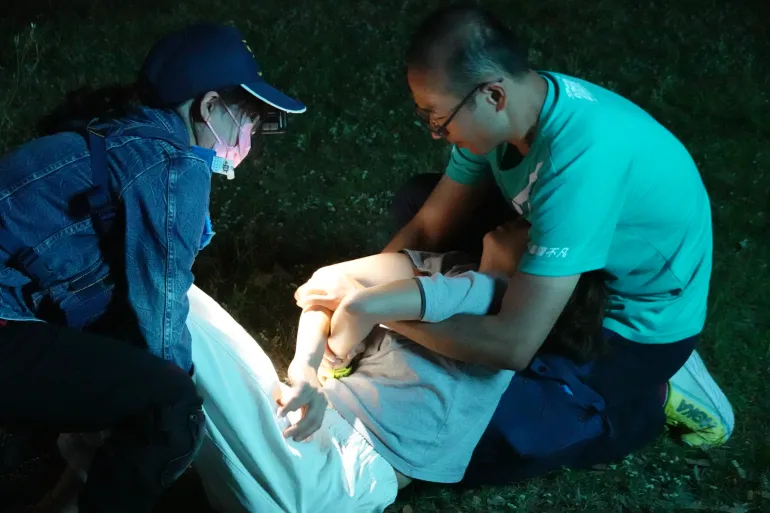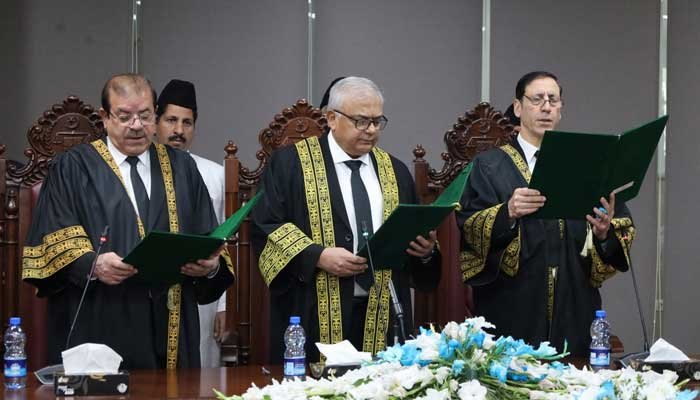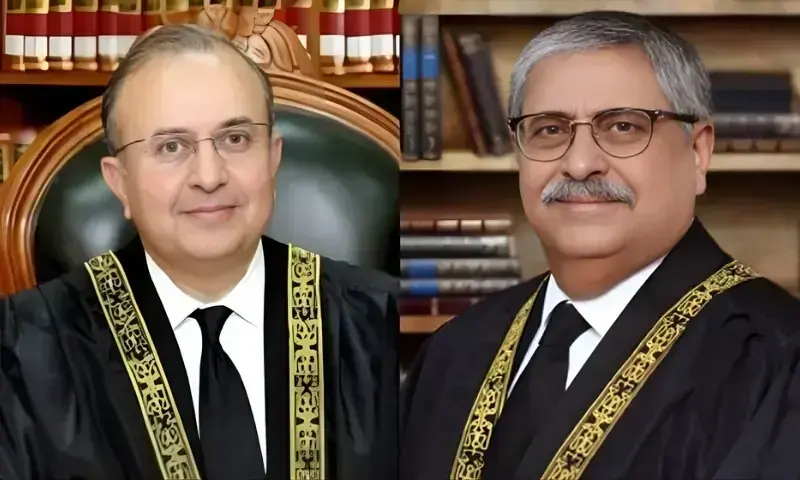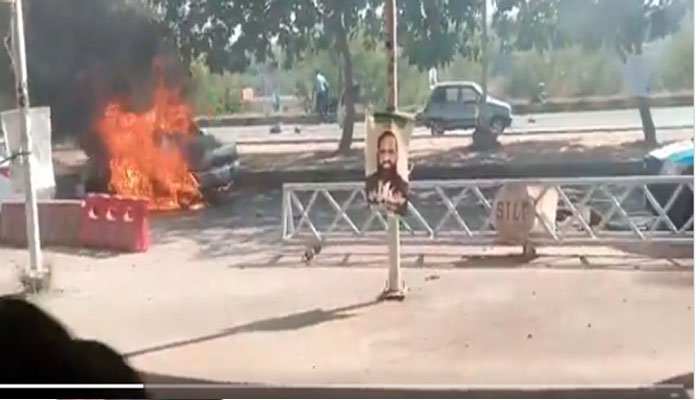In the heart of Taiwan’s capital, a missile strike simulation has transformed a tranquil park into a scene of chaos and destruction. Just moments before, the area was a picture of serenity, with locals meandering along pathways flanked by traditional brick and stone architecture, nestled within the city’s undulating terrain.
Suddenly, the calm was shattered. The park, once a haven of peace, now mirrors the aftermath of a battle, with dismembered prosthetics strewn amongst the crimson-stained stones. The air is pierced by the cries of the ‘injured,’ their pleas for assistance echoing through the streets.
However, this is no ordinary catastrophe. The bloodshed is artifice, the casualties are actors, and the first responders are in training. This elaborate tableau is the work of Kuma Academy, a civil defence organization that orchestrated the drill in late January.
The exercise spanned eight hours, immersing participants in scenarios designed to mimic the realities of war, without the violence. Trainees learned to react to air raid sirens, utilize the landscape for concealment, and evade hypothetical adversaries.
Chen Ying, a Kuma Academy instructor, emphasizes the value of such simulations: “We aim to provide our students with practical experience through these large-scale exercises, replicating the pressures and decisions they would face in real-life emergencies.”
In Taichung, a similar drill was conducted by the Taichung Self-Defence Group, drawing 120 individuals who had previously undergone basic first aid and disaster response training. One participant shared his motivation for joining, stating, “Understanding the dynamics of disaster or conflict situations is crucial. Being prepared can significantly improve one’s emotional and psychological resilience.”
Kuma Academy has witnessed significant growth, now offering an array of courses that cover a spectrum of modern threats, from cyberattacks to medical emergencies. The organization is a node in the expanding network of Taiwanese civil defence groups, which have experienced a surge in civilian enrolment.
The curriculum focuses on nonviolent preparedness, leaving military engagements to the armed forces. Ho Cheng-Hui, an activist and Kuma Academy co-founder, asserts, “Our training is about equipping civilians with the skills to protect themselves without resorting to combat.”
The training varies in form and scale. While Kuma Academy opts for grand, realistic exercises, other groups prefer communal physical training at local centers. The subjects taught range from practical skills like knot-tying and first aid to digital literacy, such as discerning misinformation online.
Assistant Professor Fang-Yu Chen from Soochow University’s Department of Political Science links these civil defence efforts to concerns over China’s stance towards Taiwan. He notes, “The Taiwanese populace is apprehensive about potential aggressive actions from China, prompting these widespread preparations.”
Since 1949, the Chinese Communist Party has claimed sovereignty over Taiwan, and recent statements from Chinese leadership have not dismissed the possibility of forceful unification, heightening tensions and the perceived need for civil defence readiness.














